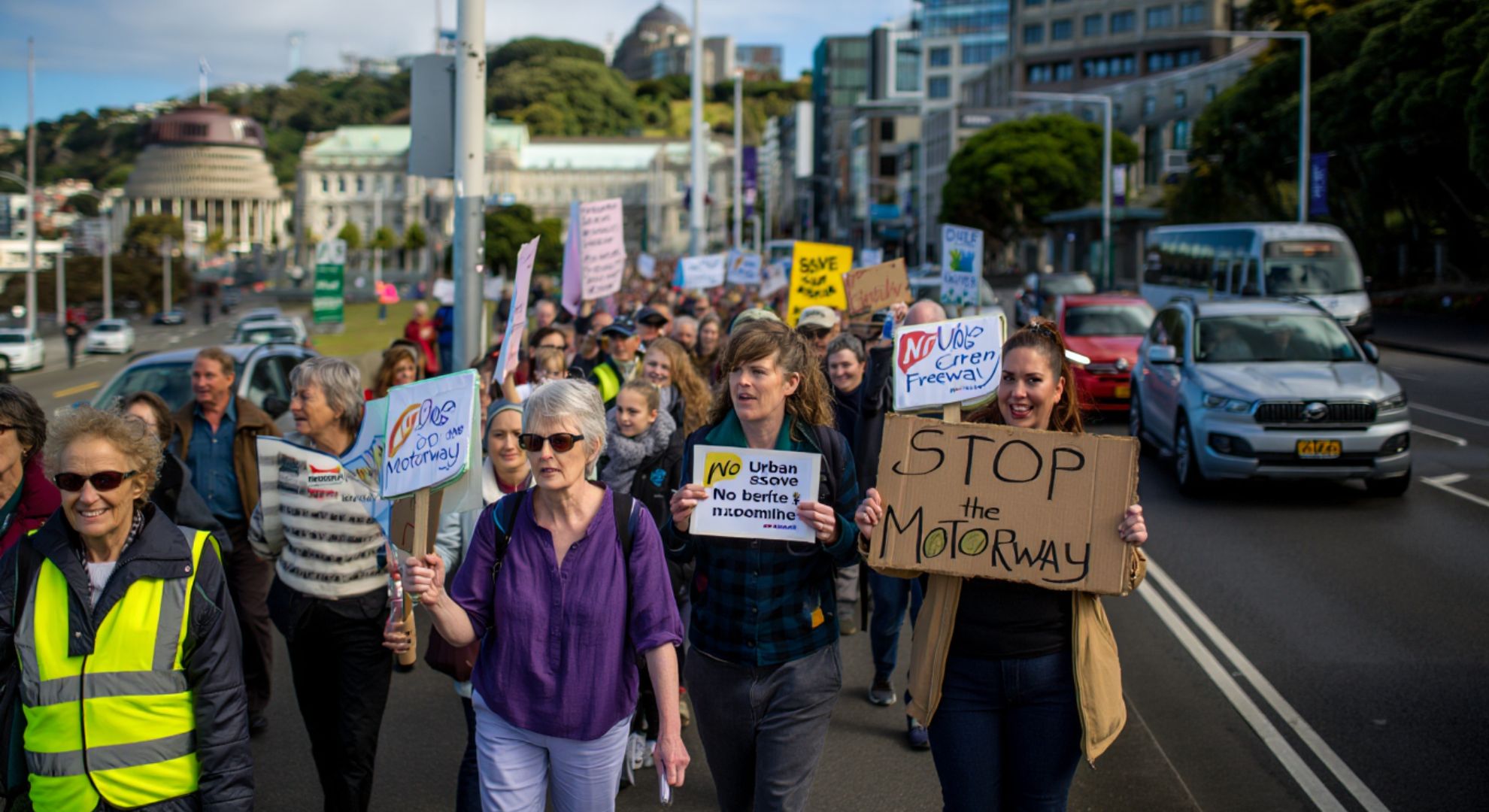Rain spattered the harbor while a homemade banner snapped in the wind. Near the steep streets of the capital, a large crowd gathered—parents with prams, cyclists in fluoro, and elders with walking sticks—chanting for a different future than the one sketched in concrete and asphalt.
They carried signs stitched from old bedsheets: “Streets for People,” “Homes, Not Highways,” and “Build the Bus First.” The mood was determined, not dour: a protest with music, dance, and the steady drumbeat of a city deciding what it wants to become.
What sparked the standoff
The proposed roadway would knit together fast on-ramps and tunnels to move commuter traffic more quickly through key inner-city corridors. Officials argue the project will add capacity, cut travel times, and make the transport network more resilient to disruptions.
Opponents counter that a bigger road simply invites more cars, locking in congestion and carbon for decades. “We can’t pave our way out of gridlock,” said one local architect, “but we can design our way toward options.”
Voices from the street
A high-school student, rain on their cheeks, looked across the interchange site. “Every new lane is a promise we’ll keep driving,” they said. “I want a promise that I can get to class by bus in ten minutes.”
A shop owner from the nearby suburb worried about construction shock. “We barely survived the last closure,” she said. “Three years of detours, and I lose my lease.”
A daily commuter struck a more careful tone. “I hate sitting in traffic,” he said, “but I don’t want my kid breathing more fumes. If the city proves the bus is faster, I’ll switch.”
And from a transport planner, a note of frustration: “We need safer streets, reliable frequencies, and a credible timeline. The question isn’t roads or transit—it’s the right mix at the right moment.”
The city’s pitch vs the community’s vision
Below is a brisk comparison of the motorway case and popular alternatives, as they appear in public debate. These are indicative, not final figures.
| Option | Headline Benefit | Key Risk | Timeframe | Emissions Impact |
|---|---|---|---|---|
| New urban motorway | Faster peak-period car travel | Induced demand; community severance | Long (years) | Higher over lifecycle |
| Rapid bus/tram corridor | High-capacity, reliable service | Political will; street reallocation | Medium | Lower per passenger |
| Cycling network + safety | Cheap, scalable access | Perceived safety gaps | Short to medium | Very low |
| Demand management (pricing, parking reform) | Cuts peak trips fast | Public acceptability | Short | Lower |
| Targeted street upgrades | Fixes bottlenecks, safety | Fragmented benefits | Short | Neutral to lower |
“Buses need their own roadspace,” said a volunteer marshal. “Otherwise they’re just fancy cars in the same queue.”
Between speed and place
The protest folds into a larger question: what makes a city thrive. Faster travel is useful, but so are short distances, safe crossings, and a mainstreet where kids can linger without fear of a swerve. Many residents want public money to widen choices—walk, cycle, bus, or rail—before adding new motorway miles.
Economists warn of induced demand: expand flow and, over time, trips expand to fill it. Health experts point to air quality gains when vehicle kilometres fall. Urbanists argue that strong transit lets housing grow near jobs, halting sprawl and rent pressure. And in a seismically active region, every big structure demands careful resilience testing, not just for the road but for the city it shapes.
What’s at stake for daily life
A new motorway promises time saved at the wheel, but it can slice through neighbourhoods and harden barriers to walking. A high-frequency busway or light rail promises time saved out of the car, with streets remade for people and shops that face the footpath. The choice is less about speed than about how speed is distributed, and who gets to move well when it rains.
One organizer put it plainly: “We’re not anti-driver. We’re pro-options. If the bus is frequent, the bike is safe, and the footpath is level, then the motorway can be smaller by design.”
A narrow window for decisions
Council committees will sift submissions, test revised layouts, and balance national funding with local values. Legal challenges may loom, but so do pragmatic trials: pop-up bus lanes, school streets, freight delivery windows, and signal tuning that can reveal what a different network feels like.
Protesters outlined immediate asks:
- Pause major works until a full public transport package is funded and scheduled.
“If we can pilot the better network now,” said a university researcher, “we either prove the motorway is smaller than we thought—or that we don’t need it at all.”
Beyond the barricades
Whatever the final vote, the march revealed a city that wants to be consulted, not just briefed. At the end of the rally, people peeled away into lanes and alleys, stopping for hot chips and steaming cups of tea. The rain let up, the lights came on, and an ordinary evening returned—full of small trips, shared spaces, and a lingering sense that the next big decision will decide many smaller ones.
